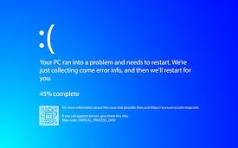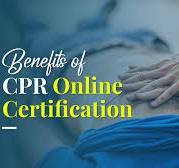Text
Navigating Labor and Timeline Challenges: Strategies for Success
In the dynamic landscape of project management, encountering labor and timeline obstacles is not uncommon. These challenges can impede progress, strain resources, and jeopardize the success of a project. However, with careful planning and strategic approaches, project managers can effectively surmount these hurdles. In this article, we will explore various strategies to overcome labor and timeline obstacles, ensuring the smooth execution of projects.
Contents
Understanding Labor and Timeline Obstacles
Common Issues Faced in Project Timelines
The Impact of Labor Obstacles on Project Efficiency
Strategies for Efficient Project Management
Utilizing Advanced Estimating Software
Team Collaboration and Communication
Overcoming Labor Challenges
Implementing Technology for Task Automation
Resource Optimization
The Role of Estimating Software
Definition and Significance
How Estimating Software Aids in Project Planning
Challenges in Implementing Estimating Software
. Addressing Perplexity in Project Management
The Role of Adaptability in Overcoming Challenges
Burstiness in Project Management
Utilizing Bursts of Productivity
Engaging the Reader with Analogies
Keeping it Brief and Simple
Importance of Concise Project Plans
VIII. Active Voice in Project Communication
Impact of Active Voice in Conveying Urgency
Rhetorical Questions for Reflection
Prompting Readers to Evaluate Their Project Management Strategies
FAQs
What are the key challenges in project timelines?
How does technology aid in overcoming labor challenges?
Are there specific success stories with estimating software?
Why is adaptability crucial in project management?
How can project managers enhance communication using the active voice?
Understanding the Challenges
Robust Planning and Scheduling
The foundation of successful project management lies in comprehensive planning and scheduling. By developing a detailed project plan, including realistic timelines and resource allocations, project managers can anticipate potential challenges. Regularly updating and revising the plan as the project progresses allows for better adaptation to unforeseen obstacles.
Risk Management
Anticipating and addressing risks is a critical aspect of overcoming labor and timeline challenges. Implementing a robust risk management strategy involves identifying potential issues, assessing their impact, and developing contingency plans. By proactively managing risks, project managers can minimize disruptions and ensure that the project stays on track.
Agile Methodology
In today’s fast-paced business environment, embracing agile methodologies can be a game-changer. Agile allows for flexibility in project execution, enabling teams to adapt to changing circumstances efficiently. Short iterations, frequent feedback loops, and continuous improvement contribute to a more resilient project framework, better equipped to handle unexpected obstacles.
Resource Optimization
Collaboration and Communication
Clear and open communication is essential for tackling labor and timeline obstacles. Establishing transparent communication channels within the project team and stakeholders facilitates the identification of issues at an early stage. Regular team meetings, progress reports, and feedback sessions create a collaborative environment that fosters problem-solving and innovation.
Technology Integration
Leveraging technology can significantly enhance project efficiency. Project management tools, collaboration platforms, and automation software can streamline processes, improve communication, and provide real-time insights. Integrating technology into project workflows helps reduce manual errors and accelerates the pace of work.
Continuous Monitoring and Adaptation
Monitoring project progress in real-time allows project managers to identify deviations from the plan promptly. By continuously tracking key performance indicators (KPIs) and project metrics, teams can make data-driven decisions and implement corrective actions as needed. This proactive approach ensures that the project remains aligned with its objectives.
Training and Skill Development
Conclusion
Labor and timeline obstacles are inevitable in the realm of project management, but with the right strategies in place, they can be effectively managed. Robust planning, risk management, agile methodologies, resource optimization, collaboration, technology integration, continuous monitoring, and skill development are all essential components of a successful project management approach. By adopting these strategies, project managers can steer their teams through challenges, ensuring the timely and successful completion of projects.
Tagged:
Labor and Timeline Challenges ,
project management software ,
project management ,
Understanding Labor and Timeline Obstacles ,
construction management software ,
software for project tracking ,
construction and project management software
Contact us :
RELATED POSTS
How Do I Choose the Best Construction Company in My Local Area?
How to Ensure the Safety of Your Construction Workers
How Much Does an Architect Cost in 2024?
#Labor and Timeline Challenges#project management software#project management#Understanding Labor and Timeline Obstacles#construction management software#software for project tracking#construction and project management software
0 notes
Text
Safeguarding Your Well-being: The Importance of Group Personal Accident Insurance

In the unpredictable journey of life, unforeseen accidents can disrupt the balance of our daily existence, leading to physical, emotional, and financial consequences. To mitigate the impact of such unfortunate events, Group Personal Accident Insurance emerges as a crucial safety net for individuals within an organization. This form of insurance not only provides financial support but also fosters a sense of security and well-being among members. This article explores the key facets of Group Personal Accident Insurance, its benefits, and why it should be considered an essential component of comprehensive employee welfare programs.
Understanding Group Personal Accident Insurance :

Group Personal Accident Insurance is a specialized insurance policy designed to offer financial assistance in the event of accidents causing bodily injury, disability, or death. Unlike individual accident policies, group insurance provides coverage to a defined group of individuals, typically employees within an organization. The coverage extends to accidents that occur both within and outside the workplace, ensuring round-the-clock protection.
This type of insurance typically covers a range of scenarios, including but not limited to road accidents, falls, burns, and other accidental injuries. The coverage may encompass medical expenses, disability benefits, and even death benefits, offering a comprehensive support system for individuals and their families during challenging times.
Benefits of Group Personal Accident Insurance :
Financial Protection: One of the primary advantages of Group Personal Accident Insurance is the financial protection it provides. In the aftermath of an accident, the policy ensures that medical expenses are covered, reducing the financial burden on the affected individual and their family.

Disability Coverage:
In the unfortunate event of a permanent or temporary disability resulting from an accident, the insurance provides disability benefits. This can include compensation for loss of income, rehabilitation costs, and necessary adjustments to the living environment.
Death Benefits:
In case of a fatal accident, the policy offers a lump sum amount to the nominee or beneficiary. This financial support can assist the family in managing immediate expenses and maintaining their financial stability in the long run.
Global Coverage:
Group Personal Accident Insurance often provides coverage not just within the country of residence but also during international travel. This is particularly beneficial for organizations with a global workforce.
Peace of Mind:
Beyond the financial aspects, the psychological impact of knowing that one is covered in the face of unforeseen accidents cannot be overstated. It fosters a sense of security and peace of mind, contributing to overall employee health benefits well-being.

Conclusion :
In a world where uncertainties abound, Group Personal Accident Insurance stands as a shield against the unexpected. Organizations that prioritize the welfare of their employees recognize the importance of such insurance in promoting a secure and supportive work environment. By investing in Group Personal Accident Insurance, employers not only fulfill a moral responsibility but also contribute to a more engaged and resilient workforce. As individuals, embracing the protection offered by this insurance ensures that we can navigate life's journey with greater confidence, knowing that our well-being is safeguarded against the uncertainties that lie ahead.
TAGGED:
insurance in insurance ,
employer benefits ,
group personal accident ,
business insurance ,
health benefits ,
medical insurance personal ,
accident insurance ,
employee health benefits ,
Group Personal Accident Insurance
Related Posts:
How to Invest in Crypto: A Quick and Informative Guide
A Truck Lover's Guide to the 2023 GMC Sierra 1500…
The Best Ways to Handle a Small Move With Truck Rental
Best Online Casino App pays Real Money
How to make sure that your manufacturing company is the best
5 Tips to Select the Best Credit Card to Rebuild Credit
Connect with Us
https://in.linkedin.com/comapny/tirupatihelps
#insurance in insurance#employer benefits#group personal accident#business insurance#health benefits#medical insurance personal#accident insurance#employee health benefits#Group Personal Accident Insurance
0 notes
Text
A Journey Through Time: The History of the Blue Screen of Death

The Blue Screen of Death (BSoD), a dreaded sight for every Windows user, has a long and intriguing history. Over the years, it has become synonymous with system crashes and technical malfunctions. In this article, we will delve into the evolution of the Blue Screen of Death, exploring its origins, development, and the impact it has had on the world of computing.
Birth of the Blue Screen:

Windows 95 and the Consumerization of Errors:
With the advent of Windows 95 in 1995, Microsoft aimed to make computing more accessible to the average user. As a part of this transition, the Blue Screen of Death underwent a transformation. Instead of presenting obscure error codes, the BSoD in Windows 95 featured friendlier language, attempting to explain the problem in a way that was more understandable for non-technical users. This shift marked the beginning of the consumerization of error messages.
Windows XP and the Notorious BSoD:
Windows XP, released in 2001, brought about significant changes to the Blue Screen of Death. The color remained blue, but the design became more modern and user-friendly. The BSoD in Windows XP featured a prominent error message, often accompanied by a stop code and a brief description of the problem. Despite these improvements, the Blue Screen of Death remained a symbol of system instability, prompting users to fear unexpected crashes and data loss.
Windows 7 and Beyond: Evolution Continues:

Memorable BSoD Moments:
Over the years, the Blue Screen of Death has made appearances in various unexpected and sometimes humorous contexts. From movies and TV shows to public presentations, the BSoD has become a cultural symbol representing technical difficulties and system failures. Memorable instances include high-profile presentations by Microsoft executives where the BSoD made an untimely appearance, adding an element of irony to the situation.
BSoD in the Age of Technology:

Conclusion:
The Blue Screen of Death, born out of the necessity for system diagnostics, has evolved from a cryptic tool for developers to a symbol of frustration for everyday users. Throughout its history, the BSoD has undergone transformations reflective of the changing landscape of computing. Despite the advancements in technology and operating systems, the Blue Screen of Death remains an iconic element of the digital experience, serving as a reminder that, in the complex world of technology, errors and crashes are an inevitable part of the journey.
Tagged:
blue screen ,
a blue screen
blue screen of death
blue screen of
blue screen screen
bsod screen
bsod blue screen of death
virus on pc
RELATED POSTS
https://submitguestposts.com/how-to-minimize-the-risks-of-staff-augmentation/
https://submitguestposts.com/cloud-disaster-recovery-cloud-dr/
https://submitguestposts.com/different-ways-to-tackle-marketing-strategies-in-2022/
https://submitguestposts.com/engineering-services-companies-in-india/
https://submitguestposts.com/tamilyogi-2022hd-tamil-hindi-dubbed-latest-movies-released-free-download/
https://submitguestposts.com/subsmovies/
https://submitguestposts.com/movierulz-pz-website/
https://submitguestposts.com/filmywap/
#a blue screen#blue screen of death#blue screen of#blue screen screen#bsod screen#bsod blue screen of death#virus on pc
0 notes
Text
Stay Up-To-Date and Save Lives: The Crucial Importance of Renewing CPR Certification
Cardiopulmonary Resuscitation (CPR) is a life-saving skill that empowers individuals to respond effectively in emergency situations. Whether it's a sudden cardiac arrest at home, in the workplace, or in public spaces, having individuals trained in CPR can significantly increase the chances of survival. However, the effectiveness of CPR is contingent upon the proficiency of the rescuer. This is why staying up-to-date on CPR certification is not just a formality but a critical commitment to saving lives.

The Evolving Nature of CPR Guidelines
CPR guidelines are not static; they evolve based on scientific research and advancements in medical knowledge. The American Heart Association (AHA) and other organizations periodically update these guidelines to ensure that CPR techniques align with the latest evidence. Renewing CPR certification allows individuals to familiarize themselves with these updates, ensuring that their skills are in line with the most effective and current practices.
Enhancing Skill Proficiency
Like any skill, proficiency in CPR requires practice and ongoing training. Renewing CPR certification provides an opportunity for individuals to refresh their knowledge and skills. Regular training sessions help maintain muscle memory and improve reaction times during emergencies. This heightened proficiency is crucial when seconds count and can be the determining factor in saving a life.

Adapting to New Technologies
Advancements in technology also play a role in CPR techniques. Automated External Defibrillators (AEDs) and other devices have become more commonplace, requiring individuals to understand how to integrate these tools into their response. Renewing CPR certification ensures that individuals are well-versed in the latest technologies, enabling them to use them effectively in emergency situations.
Legal and Professional Requirements
In many professions and workplaces, holding a valid CPR certification is not just a recommendation but a legal or professional requirement. Healthcare providers, lifeguards, teachers, and other professionals are often mandated to maintain current CPR certification as part of their job responsibilities. Failure to do so can have legal consequences and may even lead to professional consequences, emphasizing the gravity of staying up-to-date on certification.
Community Safety and Public Health
Communities benefit greatly from having a pool of individuals with updated CPR certifications. In the event of a sudden cardiac arrest, the immediate response of a trained bystander can be the difference between life saves and death. By renewing CPR certification, individuals contribute to a safer and more prepared community, fostering a culture of collective responsibility for public health.

Conclusion
In conclusion, renewing CPR certification is not just a bureaucratic requirement; it is a commitment to being a competent and effective responder in times of crisis. The evolving nature of CPR guidelines, the need for enhanced skill proficiency, adaptation to new technologies, and legal and professional obligations all underscore the critical importance of staying up-to-date. By doing so, individuals can be confident in their ability to save lives and contribute to the well-being of their communities.
Tagged:
importance of renew cpr certification
cpr certification
life support
save a life
job in health care
life save
cpr job
cpr guidelines
renew cpr certification
Related Posts:
5 Common Beginner Mistakes in CPR and How to Avoid Them
How To Introduce Time Tables To Kids And Their Importance
Indulge In A Comfy Stay In The Student Accommodation…
The Importance of Preventing Medical Malpractice in…
The Importance of Regular Dental Check-Ups: What You…
The Importance of Oral Hygiene: Tips for a Healthy Smile
How to Invest in Crypto: A Quick and Informative Guide
A Truck Lover's Guide to the 2023 GMC Sierra 1500…
The Best Ways to Handle a Small Move With Truck Rental
Best Online Casino App pays Real Money
How to make sure that your manufacturing company is the best
5 Tips to Select the Best Credit Card to Rebuild Credit
Connect with Us
https://in.linkedin.com/comapny/tirupatihelps
#importance of renew cpr certification#cpr certification#life support#save a life#job in health care#life save#cpr job#cpr guidelines#renew cpr certification
0 notes
Text
Mastering SD Card File Management: A Comprehensive Guide for Accessing, Organizing, and Transferring Files
With the increasing reliance on portable devices such as cameras, smartphones, and audio recorders, SD cards have become an essential storage solution. Mastering the art of SD card file management is crucial for efficiently accessing, organizing, and transferring your digital files. In this comprehensive guide, we will delve into the intricacies of SD card file management, providing you with the knowledge to streamline your digital workflow.
1 Understanding SD Cards:
2 Accessing an SD Card:
3 Mounting and Formatting an SD Card:
4 Transferring Files to an SD Card:
5 Managing Files on an SD Card:
6 Conclusion:

Understanding SD Card Basics:
Before we embark on the journey of mastering SD card file management, it's essential to grasp the basics. Secure Digital (SD) cards come in various capacities, ranging from a few gigabytes to terabytes, with different speed classes affecting data transfer rates. Familiarize yourself with your SD card's capacity and speed class, as this information influences file storage and transfer capabilities.

Accessing SD Card Files on Different Devices:
SD cards are versatile and compatible with a wide range of devices, including cameras, smartphones, laptops, and more. To access your files seamlessly, ensure your device has an SD card slot or use an SD card reader. Insert the SD card, and your device should recognize it as external storage. On some devices, you may need to navigate to the file manager or settings to access the SD card.
Organizing Files on Your SD Card:
Effective file organization is the key to a stress-free digital experience. Create a well-structured folder system on your SD card to categorize files logically. For instance, create folders such as "Photos," "Videos," "Documents," and "Music" to keep different types of files organized. Subdivide these folders further based on specific projects or events to maintain a granular level of organization.

Naming Conventions:
Implementing consistent naming conventions for your files is essential for quick and easy retrieval. Use clear and descriptive names, including dates or project names, to make it easier to identify files at a glance. Avoid generic names like "IMG_001" or "Document1," as these can lead to confusion over time.
Utilizing Backup Strategies:
Protect your data by implementing backup strategies for your SD card. Regularly transfer files from your SD card to a computer or cloud storage to create duplicates. This ensures that even if the SD card fails or gets lost, your precious data remains secure. Additionally, consider using backup tools or applications that automate the process, providing an extra layer of protection.
Transferring Files Between Devices:
Transferring files to SD card between devices is a common task when managing SD cards. Use a USB cable, SD card reader, or wireless transfer methods (such as Bluetooth or Wi-Fi) to move files between your SD card and other devices. When transferring large files, ensure that your devices support the file formats and sizes to prevent any compatibility issues.
Maintaining SD Card Health:
Regularly check and maintain the health of your SD card files to prevent data corruption and loss. Use the built-in tools on your devices to scan for errors and fix them. Avoid removing the SD card while files are being accessed or transferred to prevent potential data corruption. Additionally, keep the contacts on the SD card clean to ensure a reliable connection.
Conclusion:
Mastering SD card file management is essential for anyone dealing with digital media and documents. By understanding the basics, creating an organized folder structure, implementing backup strategies, and adopting proper file transfer practices, you can optimize your workflow and ensure the safety of your valuable data. With these tips, you'll be well-equipped to navigate the complexities of SD card file management and make the most of your digital storage experience.
Tagged:
mastering sd card file management
Accessing files on SD Card ,
files transfer to SD Card ,
files on an SD Card ,
formatting SD Card ,
Manage files on SD Card ,
SD Card data back up ,
SD Card file organization ,
SD Card files ,
SD Card management guide
RELATED POSTS
· Nifty Tips To Evaluate The Growth Of New Joiners
· New Law Can Save You Money on Your Internet and TV Service
· Four good reasons to write a product requirement document
How marketing can boost your company’s online presence
Life off Screen: The Lives of Women in Esports
The Digitalization of Games on Chance in 2023
Mastering SD Card File Management: A Comprehensive Guide for Accessing, Organizing, and Transferring Files
The Dos and Don’ts of Media Relations
Contact us: [email protected]
https://www.facebook.com/techaddanews
#mastering sd card file management#Accessing files on SD Card#files transfer to SD Card#files on an SD Card#formatting SD Card#Manage files on SD Card#SD Card data back up#SD Card file organization#SD Card files#SD Card management guide
0 notes
Text
Choosing Between Laminate and Vinyl Flooring: A Comprehensive Guide for Your Home
Choosing Between Laminate and Vinyl Flooring: A Comprehensive Guide for Your Home

Selecting the right flooring for your home is a crucial decision that can significantly impact its aesthetics, comfort, and overall value. Laminate and vinyl flooring have emerged as popular choices, each offering distinct advantages. This article aims to provide a comprehensive guide to help you make an informed decision based on your preferences, lifestyle, and budget.
Laminate Flooring :
Laminate flooring is a synthetic product that simulates the look of hardwood or stone but comes at a fraction of the cost. Composed of multiple layers, including a high-density fiberboard core and a realistic photographic image layer, laminate flooring offers a durable and affordable option for homeowners. The top wear layer protects against scratches, stains, and fading, making it an excellent choice for high-traffic areas.

One of the key advantages of laminate flooring is its easy installation. With click-lock systems, homeowners can often complete the installation as a DIY project, saving on labor costs. Additionally, laminate is resistant to moisture, making it suitable for various rooms in the house, excluding wet areas like bathrooms.
Vinyl Flooring :
Vinyl flooring, on the other hand, is a versatile and resilient option that has gained popularity in recent years. Available in sheets, tiles, or planks, vinyl flooring is known for its water-resistant properties, making it suitable for bathrooms, kitchens, and basements. Luxury Vinyl Plank (LVP) and Luxury Vinyl Tile (LVT) closely mimic the appearance of hardwood or natural stone, providing an attractive and cost-effective alternative.
One of the standout features of vinyl flooring is its soft and comfortable feel underfoot. This makes it an excellent choice for spaces where standing for long periods is common. Vinyl is also highly resistant to scratches and dents, making it an ideal solution for homes with pets or young children.

Comparative Analysis :
When deciding between laminate and vinyl flooring, several factors come into play. Both options offer a wide range of styles and patterns to suit various design preferences. While laminate is typically more affordable, vinyl's water-resistant properties give it an edge in areas prone to moisture.
Durability is another crucial aspect. Laminate is known for its scratch resistance, making it suitable for high-traffic areas. However, vinyl's resilience against water and its ability to absorb impact make it an excellent choice for households with active lifestyles.
Installation and maintenance also differ between the two. Laminate's click-lock system simplifies installation, but its susceptibility to moisture requires careful cleaning. Vinyl, on the other hand, is easy to clean and maintain, but installation may be more involved, particularly for larger areas.
Conclusion :
In conclusion, the choice between laminate and vinyl flooring depends on your specific needs and preferences. If budget and scratch resistance are top priorities, laminate may be the better option. However, if you seek water resistance, comfort, and a variety of design options, vinyl flooring might be the ideal solution. Ultimately, both options offer durable and stylish flooring solutions for your home, and your decision should align with your lifestyle and aesthetic preferences.
Tagged:
laminate flooring and installation
laminate flooring and vinyl flooring
laminate flooring installation
vinyl flooring
laminate flooring
Laminate vs Vinyl Flooring
TO KNOW MORE ABOUT ABOVE TOPIC CONTACT US ON:
Email: [email protected]
#laminate flooring and installation#laminate flooring and vinyl flooring#laminate flooring installation#vinyl flooring#laminate flooring#Laminate vs Vinyl Flooring
0 notes
Text
The Glitter of Gold: Exploring the Benefits and Risks of Investing in Gold Bars
The Glitter of Gold: Exploring the Benefits and Risks of Investing in Gold Bars
Understanding the Historical Significance of Gold
Getting a Grip on Gold Bars: What They Are and How They Differ
The Benefits of Investing in Gold Bars

Gold has captivated human fascination for centuries, admired for its lustrous beauty and revered as a symbol of wealth. In the world of investing, gold has proven to be a timeless asset, with investors often turning to gold bars as a tangible form of wealth preservation. In this article, we will delve into the benefits and risks associated with investing in gold bars, shedding light on why this precious metal continues to be an attractive option for many.
Benefits of Investing in Gold Bars:
Historical Store of Value:
Throughout history, gold has maintained its value, making it a reliable store of wealth. Unlike fiat currencies, which can be affected by inflation or economic downturns, gold has demonstrated resilience in retaining its purchasing power.
Portfolio Diversification:
Gold has a low correlation with other assets such as stocks and bonds. This makes it an effective tool for diversification, helping to reduce overall portfolio risk. In times of economic uncertainty, gold has often acted as a hedge, providing stability when other investments may falter.
Liquidity:
Gold bars, especially those of recognized purity and weight, are highly liquid assets. They can be easily bought or sold in the global market, providing investors with flexibility and the ability to quickly convert their investment into cash when needed.

Gold bars offer a tangible form of investment. Unlike stocks or bonds, which exist in the digital realm, holding physical gold provides a sense of security. Investors can store gold bars in a safe deposit box or a secure facility, giving them direct control over their investment.
Safe-Haven Asset:
During times of economic turmoil or geopolitical instability, investors often flock to gold as a safe-haven asset. The precious metal has a reputation for preserving wealth when traditional investments face challenges.
Risks of Investing in Gold Bars:
Price Volatility: While gold has historically maintained its value, it is not immune to price fluctuations. The market for gold can be influenced by various factors, including economic indicators, interest rates, and global events. Investors should be prepared for short-term price volatility.
No Income Generation:
Unlike some investments that generate income, such as dividend-paying stocks or rental properties, gold does not provide a regular stream of cash flow. Investors relying on income from their investments may find gold less attractive compared to other assets.
Storage and Insurance Costs: Holding physical gold requires secure storage, which may incur additional costs. Furthermore, investors should consider insurance expenses to protect their investment against theft, damage, or other unforeseen events.

The price of gold can be influenced by market sentiment and speculative trading. Short-term price movements may not always align with the fundamentals of the metal, leading to potential risks for investors who react impulsively to market dynamics.
Limited Industrial Use:
Unlike other precious metals like silver, gold has limited industrial applications. Its value is primarily driven by its role as a store of value and a safe-haven asset. Changes in industrial demand may not have a significant impact on gold prices.
Conclusion:
Investing in gold bars can be a prudent strategy for diversification and wealth preservation, offering a timeless allure that transcends generations. However, like any investment, it is essential for investors to carefully weigh the benefits and risks associated with holding physical gold. Understanding the market dynamics, considering individual financial goals, and staying informed about global economic trends are crucial steps for those looking to add the glitter of gold to their investment portfolio.
Tagged:
gold price ,
today gold price gold ,
spot value of gold ,
spot market gold price ,
gold stock ,
spot gold ,
price of gold price ,
investing in gold bars
gold bar investments
Recent Posts
Investing in Gold Bars: Benefits and Risks
Safeguarding Treasures: A Guide to High-Value Asset Protection
What is Business Process Management Used For?
How to Develop a Successful Telemedicine Application?
Create a simple advertising campaign in networks and promote your business
Contact us: [email protected]
#gold price#today gold price gold#spot value of gold#spot market gold price#gold stock#spot gold#price of gold price#investing in gold bars
0 notes
Text
A Comprehensive Guide to Home Depot Bathroom Sinks: Styles, Installation, and Maintenance

A Comprehensive Guide to Home Depot Bathroom Sinks: Styles, Installation, and Maintenance
Home Depot offers a vast selection of bathroom sinks, catering to various styles and preferences. Choosing the right sink involves considering factors like style, installation requirements, and maintenance. This comprehensive guide will walk you through the diverse range of bathroom sink styles available at Home Depot, provide insights into proper installation procedures, and offer tips for maintaining your sink for long-lasting functionality and aesthetics.
Exploring Bathroom Sink Styles at Home Depot

Undermount Sinks:
These sinks are installed beneath the countertop, creating a seamless and modern look.
Suitable for various countertop materials, including granite and quartz.
Drop-in Sinks:
Easy to install, drop-in sinks sit on top of the countertop with the rim exposed.
Available in diverse shapes and sizes to complement different bathroom designs.
Vessel Sinks:
These stylish sinks sit on top of the countertop, resembling a bowl or basin.
Ideal for adding a touch of luxury and uniqueness to your bathroom.
Wall-Mounted Sinks:
Perfect for smaller bathrooms, these sinks are mounted directly to the wall.
Provide a clean and minimalist appearance, maximizing floor space.
Installation Tips for Home Depot Bathroom Sinks
Gather Necessary Tools:
Before starting the installation process, ensure you have all the required tools, including a wrench, screwdriver, and plumber's tape.
Follow Manufacturer Guidelines:
Each sink may have specific installation instructions provided by the manufacturer. Adhering to these guidelines ensures proper installation and warranty compliance.
Check Plumbing Compatibility:
Ensure that the plumbing in your bathroom is compatible with the chosen sink type. Make any necessary adjustments before installation.
Seal and Caulk Properly:
Use a high-quality sealant or caulk to create a watertight seal around the sink edges. This helps prevent water damage and maintains the integrity of the installation.
Maintenance Tips for Home Depot Bathroom Sinks
Regular Cleaning Routine:
Clean your sink regularly using a mild cleaner to prevent the buildup of soap scum, mineral deposits, and stains.
Avoid Harsh Chemicals:
Refrain from using abrasive or harsh chemical cleaners, as they can damage the finish of your sink. Opt for gentle, non-abrasive cleaners.
Address Leaks Promptly:
If you notice any leaks or water damage, address the issue promptly to prevent further damage to the sink and surrounding areas.
Follow Manufacturer's Maintenance Guidelines:
Refer to the manufacturer's guidelines for specific maintenance instructions. This ensures that you are taking the right steps to care for your particular sink model.
Conclusion

Choosing a bathroom sink from Home Depot involves considering various styles, installation methods, and maintenance practices. By exploring the diverse options available and following proper installation and maintenance tips, you can enhance the functionality and aesthetics of your bathroom. Whether you prefer the sleek look of undermount sinks, the convenience of drop-in sinks, the elegance of vessel sinks, or the space-saving design of wall-mounted sinks, Home Depot has the perfect option to suit your needs.
Tagged:
bathroom sink and vanities,
sink and faucets
faucet on sink
bathroom sinks and faucets
comprehensive guide to home depot bathroom sinks
home depot bathroom sinks
bathroom sinks
Home Improvement
TO KNOW MORE ABOUT ABOVE TOPIC CONTACT US ON:
Email: [email protected]
SOCIAL MEDIA:
Recent Posts
· Reasons to Choose Porcelain Tile
· A Comprehensive Guide to Home Depot Bathroom Sinks: Styles, Installation, and Maintenance
· Laminate vs Vinyl Flooring: Which One Should You Choose for Your Home?
· How to Fix a Bubble in Hardwood Floor: Step-by-Step Guide
· Tips to Fix Laminate Floor Bubbling | Laminate floor bubbling
#bathroom sink and vanities#sink and faucets#faucet on sink#bathroom sinks and faucets#comprehensive guide to home depot bathroom sinks#home depot bathroom sinks#bathroom sinks#Home Improvement
0 notes
Text
Unleashing the Power of Marketing to Amplify Your Company's Online Presence

In the fast-paced digital age, establishing a robust online presence is essential for the success and growth of any business. As consumers increasingly turn to the internet to discover, research, and make purchasing decisions, a well-executed marketing strategy becomes a linchpin for businesses aiming to thrive in the competitive online landscape. This article explores how marketing can be the driving force behind elevating your company's online presence, encompassing various aspects from brand building to leveraging the latest digital tools.
Contents
1 Not in your remit? Not a valid argument
2 Marketing 101
3 A brand is never finished
4 The best-looking websites don’t always work
5 The importance of user experience and SEO
5.1 What is SEO?
5.2 What is UX?
5.3 Eight common UX errors
5.4 Social media and marketing success
5.5 Offline marketing
5.6 Marketing is an exciting space
5.7 Business intelligence
6 Every company needs strong marketing
1. Building a Strong Brand Foundation:
The first step in enhancing your online presence is building a strong brand foundation. Effective marketing helps define and communicate your brand identity, ensuring consistency across all online channels. This includes a compelling brand story, a memorable logo, and a cohesive visual identity that resonates with your target audience.

2. Content is King:
A key element of online marketing is content creation. Regularly publishing high-quality, relevant, and engaging content not only establishes your authority in your industry but also boosts your search engine rankings. A well-optimized website with informative blog posts, engaging videos, and visually appealing graphics can attract and retain visitors, encouraging them to explore your products or services.
3. Social Media as a Catalyst:
Social media platforms are powerful tools for expanding your online footprint. Marketing through platforms like Facebook, Instagram, Twitter, and LinkedIn enables you to connect with your audience on a personal level. Shareable content, interactive posts, and regular updates can help your business stay top-of-mind and foster a sense of community among your followers.
4. Search Engine Optimization (SEO):
SEO is a fundamental aspect of online marketing that significantly influences your company's visibility on search engines. Implementing SEO strategies, such as optimizing website content, using relevant keywords, and building quality backlinks, can improve your website's search engine rankings, driving organic traffic and increasing your online presence.
Email Marketing:
Email marketing remains a potent tool for nurturing leads and retaining customers. Building a subscriber list allows you to communicate directly with your audience, providing them with valuable content, promotions, and updates. An effective email marketing strategy can drive traffic to your website, increase brand loyalty, and ultimately enhance your online presence.
Influencer Partnerships:
Collaborating with influencers in your industry can amplify your brand's reach. Influencers already have a dedicated following, and their endorsement can introduce your products or services to a wider audience. Selecting influencers whose values align with your brand can lend credibility and authenticity to your marketing efforts.
Paid Advertising:
While organic methods are crucial, paid advertising can give your online presence a significant boost. Platforms like Google Ads and social media advertising allow you to target specific demographics, ensuring your message reaches the right audience. A well-crafted paid advertising campaign can drive traffic, generate leads, and increase brand visibility.
Analytics and Data-driven Decisions:
Utilizing analytics tools provides valuable insights into the performance of your marketing efforts. Monitoring key metrics such as website traffic, conversion rates, and social media engagement allows you to refine your strategies. Data-driven decisions ensure that your marketing efforts are effective and that you can adapt to changes in consumer behavior.

Conclusion:
In conclusion, a comprehensive marketing strategy is indispensable for bolstering your company's online presence. From crafting a compelling brand identity to leveraging various digital channels,digital marketing serves as the engine that propels your business forward in the digital landscape. By embracing a multi-faceted approach and staying attuned to the ever-evolving digital trends, your company can not only establish a strong online presence but also thrive in the dynamic world of e-commerce.
Tagged:
digital marketing,
online marketing,
marketing a product,
marketing and strategy,
marketing approach,
whatis marketing,
digital marketing business
RELATED POSTS
5 Nifty Tips To Evaluate The Growth Of New Joiners
New Law Can Save You Money on Your Internet and TV Service
Four good reasons to write a product requirement document
How marketing can boost your company’s online presence
Life off Screen: The Lives of Women in Esports
The Digitalization of Games on Chance in 2023
Mastering SD Card File Management: A Comprehensive Guide for Accessing, Organizing, and Transferring Files
The Dos and Don’ts of Media Relations
Contact us: [email protected]
https://www.facebook.com/techaddanews
#digital marketing#online marketing#marketing a product#marketing and strategy#marketing approach#whatis marketing#digital marketing business
0 notes
Text
Maximizing Space: Designing a Stylish and Functional Bathroom in a Small Area

Designing abathroom with limited space requires creativity and thoughtful planning to make the most of every inch. With the right strategies, you can transform a small bathroom into a stylish and functional oasis. In this article, we will explore practical tips and design ideas to help you create a beautiful and efficient bathroom, proving that size is not the only factor that determines the appeal of a space.
Prioritize Essentials :
The first step in designing a small bathroom is to identify the essentials. Determine the key elements you cannot do without, such as a toilet, sink, and shower or bathtub. Once you have a clear understanding of the must-haves, you can focus on optimizing the layout to accommodate these elements comfortably. Consider compact fixtures and space-saving alternatives without compromising functionality.
Optimal Layout :
Careful planning of the bathroom layout is crucial in maximizing the available space. Choose a layout that minimizes wasted space and allows for efficient movement within the room. Consider installing fixtures in corners or along walls to create a more open and accessible feel. Additionally, sliding doors or pocket doors can be excellent alternatives to traditional swinging doors, saving valuable floor space.
Smart Storage Solutions

Storage is often a challenge in small bathrooms, but with creative solutions, you can make the most of every nook and cranny. Wall-mounted shelves and cabinets can free up valuable floor space, while recessed shelves in the shower or above the toilet provide additional storage without sacrificing roominess. Consider multifunctional furniture, such as a vanity with built-in storage or a mirror cabinet, to keep toiletries and essentials organized and easily accessible.
Light and Color
Strategic use of light and color can significantly impact the perception of space in a small bathroom. Opt for light, neutral colors to create an airy and open atmosphere. Maximize natural light by using sheer curtains or frosted glass for windows. Incorporate well-placed mirrors to reflect light and give the illusion of a larger space. Adequate lighting fixtures, such as wall sconces and overhead lights, can enhance the overall brightness and make the bathroom feel more welcoming.
Choose Appropriate Fixtures and Accessories
Selecting the right fixtures and accessories is key in a small bathroom design. Consider compact and streamlined fixtures that match the overall aesthetic while optimizing space. Wall-mounted sinks and floating vanities can create a sense of openness by exposing more floor area. Opt for a shower curtain instead of a bulky shower door, and choose sleek, space-saving accessories to avoid visual clutter. Cohesive design elements contribute to a more harmonious and visually spacious feel.
Conclusion:

Designing a small bathroom requires a thoughtful approach to layout, storage, and aesthetics. By prioritizing essentials, optimizing the layout, incorporating smart storage solutions, playing with light and color, and choosing appropriate fixtures and accessories, you can transform a compact space into a stylish and functional oasis. Remember, creativity and attention to detail are key in making the most of every inch. Embrace the challenge of designing a small bathroom, and enjoy the satisfaction of creating a space that combines style with efficiency
Tagged:
bathroom remodel ,
how to design a bathroom with little space,
design of a bathroom ,
bathroom design ,
bathroom with little space ,
bathroom accessories ,
vintage style in their bathrooms ,
bathrooms with showers ,
bathroom
TO KNOW MORE ABOUT ABOVE TOPIC CONTACT US ON:
Email: [email protected]
SOCIAL MEDIA:
Recent Posts
#bathroom remodel#how to design a bathroom with little space#design of a bathroom#bathroom design#bathroom with little space#bathroom accessories#vintage style in their bathrooms#bathrooms with showers#bathroom
0 notes
Text
"5 Compelling Reasons Why Purchasing a Home is Smarter Than Renting"

The age-old debate between renting and buying a home is a perennial topic of discussion. Both options have their merits, but for those looking to make a smart, long-term investment, purchasing a home often emerges as the wiser choice. In this article, we will delve into five compelling reasons why buying a home is a smarter financial move than renting.
Table of Contents
· Building Equity and Wealth
· Stable Monthly Payments
· Freedom for Personalization and Customization
· Potential Tax Benefits
· Long-Term Investment and Appreciation
· Conclusion
Building Equity:
One of the most significant advantages of purchasing a home is the opportunity to build equity. When you make monthly mortgage payments, a portion goes towards paying down the principal amount of the loan. Over time, as property values appreciate, the equity in your home increases. This equity can be tapped into through home equity loans or lines of credit, providing financial flexibility for important life events such as education, home improvements, or unexpected expenses.
In contrast, renting offers no such long-term financial benefit. Rent payments contribute solely to the landlord's income, offering no return on investment for the tenant. By opting to purchase a home, you are essentially investing in your future financial stability.
Stable Monthly Payments:

Renting often comes with the uncertainty of fluctuating rental prices, subject to the landlord's discretion and market conditions. In contrast, a fixed-rate mortgage provides stability and predictability in monthly payments for homeowners. With a fixed-rate mortgage, your monthly payments remain constant, allowing for better budgeting and financial planning over the long term.
This stability is particularly advantageous in the face of inflation and rising living costs. While renters may find themselves grappling with increasing rental prices, homeowners enjoy the peace of mind that comes with knowing their housing costs will remain relatively stable.
Tax Benefits:
Homeownership comes with various tax advantages that can significantly impact your overall financial picture. Mortgage interest and property tax deductions are key benefits that homeowners can leverage to reduce their taxable income. These deductions can lead to substantial savings during tax season, putting more money back into your pocket.
Renters, on the other hand, do not benefit from these tax breaks. The tax advantages associated with homeownership make purchasing a home a financially savvy choice, as it not only provides housing but also contributes to a reduction in overall tax liability.
Control and Personalization:

Owning a home grants you the freedom to control and personalize your living space according to your preferences. Unlike renting, where landlords may impose restrictions on decorating or renovating, homeowners have the autonomy to make modifications and improvements to their property. This level of control not only enhances your living experience but also contributes to the long-term value of your investment.
Furthermore, homeownership fosters a sense of community and stability. When you own a home, you are more likely to establish roots in a neighborhood, leading to stronger social connections and a greater sense of belonging. This stability can positively impact your overall well-being and quality of life.
Long-Term Appreciation:
Real estate has historically proven to be a sound long-term investment, with properties generally appreciating over time. While the real estate market may experience short-term fluctuations, the overall trend tends to be upward. Purchasing a home allows you to benefit from this appreciation, potentially yielding substantial returns when it comes time to sell.
In contrast, renting provides no opportunity for appreciation. Rent payments contribute solely to the landlord's income, and renters miss out on the potential financial gains associated with property value appreciation. Investing in a home not only provides a place to live but also serves as a strategic financial move for long-term wealth accumulation.
Conclusion:
While the decision to rent or buy ultimately depends on individual circumstances, these five compelling reasons make a strong case for the financial wisdom of purchasing a home. Building equity, enjoying stable monthly payments, leveraging tax benefits, exercising control over your living space, and capitalizing on long-term appreciation are all factors that contribute to the financial advantages of homeownership. By carefully considering these factors, individuals can make an informed decision that aligns with their long-term financial goals and aspirations.
Tagged:
rental property
rent from property
rental house owner
rental property for rent
Buying a Home
Smarter to purchase a home than rent
Recent Posts
Investing in Gold Bars: Benefits and Risks
Safeguarding Treasures: A Guide to High-Value Asset Protection
What is Business Process Management Used For?
How to Develop a Successful Telemedicine Application?
Create a simple advertising campaign in networks and promote your business
Contact us: [email protected]
#rental property#rent from property#rental house owner#rental property for rent#Buying a Home#Smarter to purchase a home than rent
0 notes
Text
Safeguarding the Heroes of Construction: Ensuring the Health and Safety of Building Site Workers

Safeguarding the Heroes of Construction: Ensuring the Health and Safety of Building Site Workers
In the dynamic and ever-evolving world of construction, the men and women who toil on building sites are the unsung heroes shaping our urban landscapes. However, their work comes with inherent health hazards that demand vigilant attention and robust safety measures. This article explores the critical aspects of protecting building site workers from potential health risks, emphasizing the importance of a comprehensive approach to ensure their well-being.
Personal Protective Equipment (PPE): The First Line of Defense
The cornerstone of safeguarding construction workers is the proper use of Personal Protective Equipment (PPE). Hard hats, safety glasses, steel-toed boots, gloves, and high-visibility clothing are not merely accessories; they are essential tools that shield workers from various hazards. Employers must prioritize the provision of high-quality, well-fitted PPE and enforce its consistent use on site.
Training and Education: Empowering Workers with Knowledge
Knowledge is power, and when it comes to construction site safety, education is paramount. Workers should receive comprehensive training on potential hazards, safe work practices, and emergency procedures. Regular refresher courses and toolbox talks contribute to a safety-conscious culture, empowering workers to make informed decisions and respond effectively in critical situations.
Health Monitoring and Surveillance
Regular health check-ups and surveillance programs are crucial for identifying and addressing health issues early on. Exposure to dust, chemicals, and noise on construction sites can have long-term health consequences. Implementing routine health screenings not only ensures the well-being of workers but also aids in the prevention of occupational diseases.
Air Quality Management
Airborne contaminants are a significant concern on construction sites. Dust from concrete, silicosis, and other construction materials can pose serious respiratory risks. Employers should invest in effective dust control measures such as proper ventilation, dust extraction systems, and the use of water suppression methods. Monitoring air quality regularly and providing respiratory protection when needed are essential components of a comprehensive health and safety strategy.
Noise Control Measures
Construction sites are notorious for their cacophony of heavy machinery and tools. Prolonged exposure to high noise levels can result in hearing loss and other adverse health effects. Implementing noise control measures, such as sound barriers and ear protection, is crucial. Additionally, scheduling noisy activities during designated hours and creating quiet zones can minimize the impact on workers' hearing health.
Fall Prevention and Fall Protection Systems
Falls are a leading cause of injuries and fatalities on construction sites. Implementing robust fall prevention measures, including guardrails, safety nets, and personal fall arrest systems, is imperative. Comprehensive training on the proper use of fall protection equipment and regular inspections of elevated work areas contribute to a safer working environment.

Musculoskeletal Health: Ergonomics and Manual Handling Training
The physical demands of construction work place significant stress on the musculoskeletal system. Employers should prioritize ergonomic design in tools and equipment, and workers should receive training on proper manual handling techniques. Implementing rotation of tasks and providing adequate rest breaks can mitigate the risk of musculoskeletal disorders and injuries.
Emergency Response and First Aid Training
In the event of an accident or sudden health crisis, timely and effective response is critical. All construction site workers should undergo basic first aid training, and readily accessible first aid kits should be strategically placed throughout the site. Emergency response drills should be conducted regularly to ensure that workers are prepared to handle unforeseen situations.
Conclusion
Construction site workers are the backbone of urban development, and their health and safety should be a top priority. Employers, regulators, and workers themselves play pivotal roles in creating a culture of safety that permeates every corner of the construction industry. By investing in quality PPE, providing thorough training, monitoring health, and implementing targeted safety measures, we can ensure that those who build our cities do so with confidence and well-being. After all, a safe and healthy workforce is not just a regulatory requirement; it's a moral obligation to the individuals who dedicate their skills and efforts to shaping the world around us.
Contact us :
RELATED POSTS
#safety training#constructions site#safety place#occupational safety health administration#safety#musculoskeletal disorders#Real Estate
1 note
·
View note